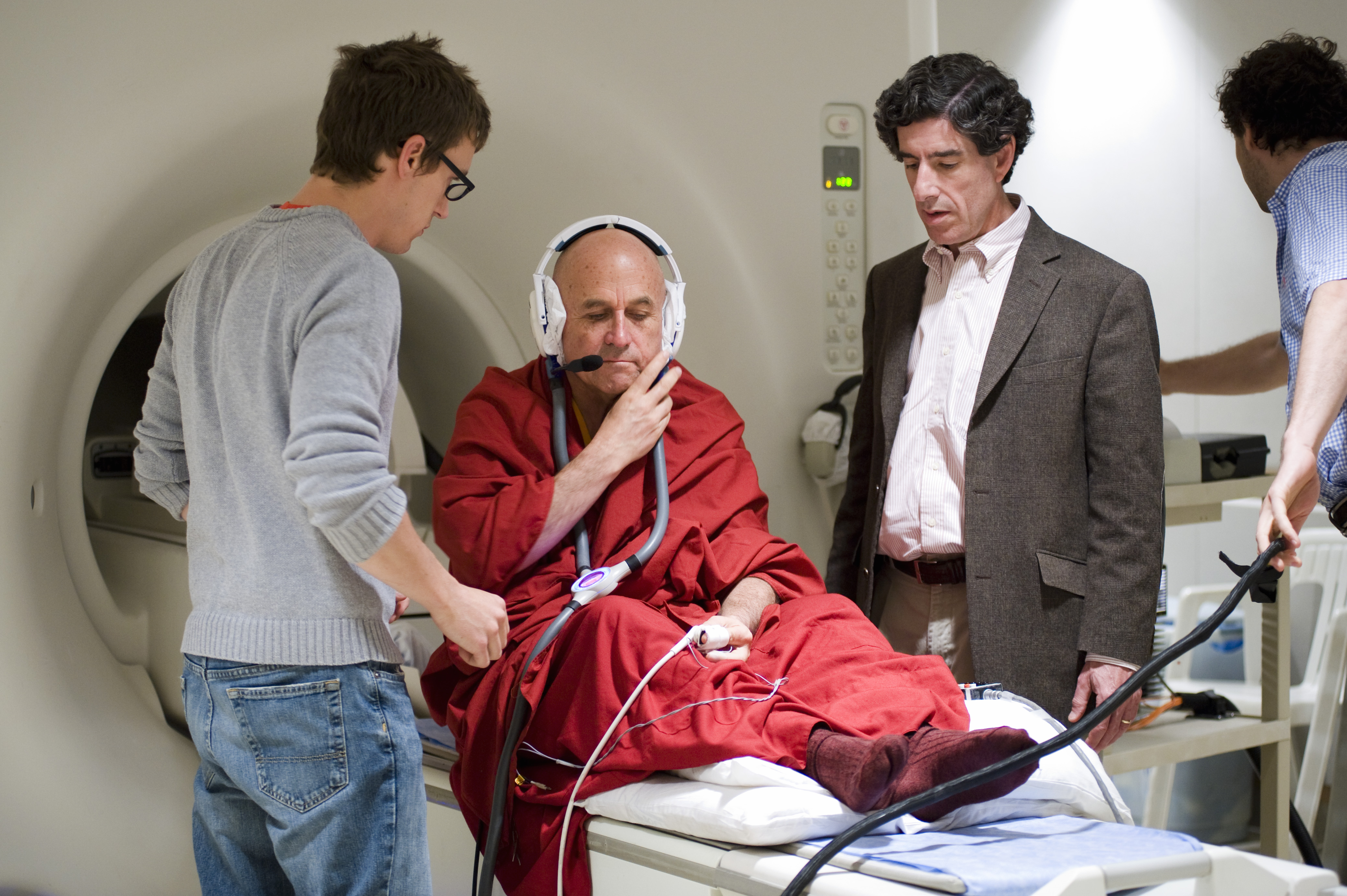Richard Davidson studies the science behind meditation and positive emotions including kindness and compassion. A neuroscience professor at the University of Wisconsin-Madison and a meditation practitioner himself, Davidson puts meditators into brain scanners and looks at how the practice changes their neural connections. We discuss his belief that humans are hard-wired for compassion and love, the use and potential misuse of meditation and how our wellbeing requires committed practices, much like going to the gym or exercising our physical health. (Our conversation has been condensed and edited for clarity.)
**
1. What does neuroscience tell us about kindness and compassion?
One of the things that we’ve learned is that there is a really important distinction between empathy and compassion. They look totally different in the brain. Empathy is taking on the emotions of another. If someone else with whom you’re empathizing is in pain or is anxious, the empathizer activates networks in the brain associated with pain and anxiety. It may be helpful to do that just a little bit to get a taste of what they’re experiencing. But if you envision experiencing that in a more enduring way, it really could be toxic. A lot of health care providers and other people on the front line often talk about compassion fatigue. It’s not compassion fatigue, it’s empathy fatigue. They are taking on the anxiety, the pain, the fear, the suffering of others and over time that can really be toxic. Compassion is different – it is the disposition to relieve another person’s suffering and it involves activating networks in the brain that are important in positive emotion and in caring and these are totally different networks than the networks that are activated in empathy.
2. Are people predisposed to either compassion or empathy?
There are large individual differences in how a person expresses their empathy and the extent to which they show empathy versus compassion. We’ve studied this in young children, for example by having an adult simulate getting fingers stuck in a clipboard and showing a facial expression of pain. If a three-year-old toddler sees an adult injure herself, there are some toddlers that wince in pain, some begin to cry, others go and kiss the finger of the experimenter and really try to relieve the distress. There’s tremendous variation – probably due to both early learning and to genetic factors. We really don’t know in detail what they’re due to but we do know that these qualities of compassion can be learned, cultivated and developed.
3. If meditation practices make people more present, how do compassion and kindness fit into the equation? Is mindfulness a morally neutral practice?
Well, in some sense it’s neutral. Although all meditation practices come from different contemplative traditions and are embedded within an ethical framework, which is often part of the religious context from which those practices are derived. But I also believe that there is a universal ethics that is not explicitly religious and that can be conveyed in a secular form, like the ethics of non-harm. It’s important to recognize that meditation is kind of like sports. There are literally hundreds of varieties and they are meant to accomplish different sorts of goals. In order to promote optimal human flourishing, there are many different components that need to be nourished. Mindfulness is one component. But if you just nurture mindfulness, it would be equivalent to going to the gym and just working out on your upper body. It’s only activating and exercising one piece of the overall puzzle.
4. You’ve advocated for calling some meditations ‘attention training’ instead. Would that help to reach more people, or by secularising the practises do you remove some part of their essence?
You’re asking a very important question and there aren’t simple answers. I believe that it is important to place these practices within an ethical framework. It doesn’t need to be a religious framework. If all you did is attention training, with a form of mindfulness that’s completely stripped from the ethical framework, you can become a more mindful killer. But if it’s embedded within the proper ethical framework, we think that will decrease the likelihood that these practices will be abused.
5. You’ve spoken before about how the same mechanisms in the brain that facilitate adversity can also allow our awakening. Can you talk more about that?
Well, the simple answer is it’s the mechanism of plasticity. Our brains are changing wittingly or unwittingly, constantly. And when we are subjected to adversity, our brains are being changed by the adversity unwittingly. We don’t choose to become captives of adversity, it just happens. But the very same mechanisms in our brain that change in response to adversity can be harnessed so that we can actually engage them to promote human flourishing.
6. How does your brain imaging work relate to this?
Most importantly, the imaging work shows us that the brain can change with very little intervention. It doesn’t take much to begin to see objective changes in the brain. It doesn’t mean that those changes will stick. It simply means that they’re accessible. And just like physical exercise: we know if we go to the gym and work out for two weeks and then stop exercising, we will eventually revert back to our base. So too with the mind, we need to keep practicing. But the data show us that it doesn’t take much to get these changes going in the first place.
7. Why do you think we’re hardwired to be compassionate? That would come as a surprise to many people, especially in this political moment.
The evidence comes from a study of very young infants. If you take a three to six month old infant and expose them to, for example, puppets that are playing altruistically, where one puppet is helping another puppet versus another scenario with the same puppets, where they’re playing aggressively and selfishly, the infants prefer the altruistic encounter. There are many behavioural ways of assessing the preference of a young infant. We can see which puppet it reaches for, we can see where it smiles more, we can track the eye movements of an infant. All of those measures show that 95% of young babies prefer the altruistic encounters. These kinds of data show us that pro sociality is built in to us, kind of like how language is built in. But in order for us to cultivate language we need to be raised in a normal linguistic community. So we think of compassion in the same way that other scientists might think of language.
Follow us here and subscribe here for all the latest news on how you can keep Thriving.
Stay up to date or catch-up on all our podcasts with Arianna Huffington here.


